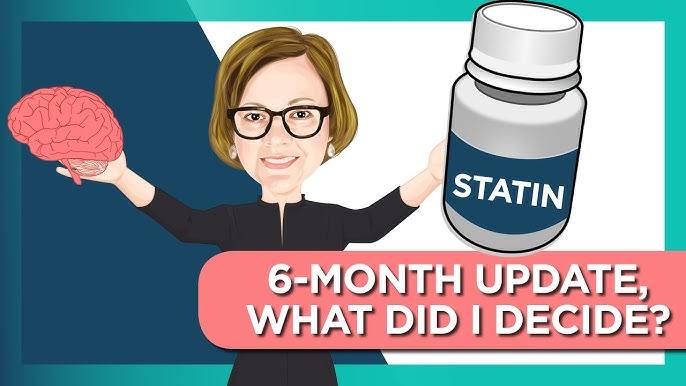Cholesterol is a waxy substance produced by the liver and found in certain foods. While it is essential for various bodily functions, including hormone production and cell membrane formation, excessive levels of cholesterol, particularly low-density lipoprotein (LDL), can lead to serious health issues such as heart disease and stroke. Traditionally, statins have been prescribed to manage high cholesterol levels; however, many individuals prefer to explore non-pharmaceutical options.
This article will delve into effective strategies for lowering cholesterol without the use of statins, focusing on dietary changes, lifestyle modifications, and natural supplements.
Understanding Cholesterol
Cholesterol exists in two primary forms: LDL (often referred to as “bad” cholesterol) and high-density lipoprotein (HDL or “good” cholesterol).
High levels of LDL cholesterol can lead to plaque buildup in arteries, increasing the risk of cardiovascular diseases.
Conversely, HDL cholesterol helps remove LDL from the bloodstream, thus providing a protective effect against heart disease.
The Role of Diet in Cholesterol Management
Diet plays a crucial role in managing cholesterol levels. Certain foods can either raise or lower cholesterol levels significantly. Understanding which foods to avoid and which to embrace is fundamental for anyone looking to improve their cholesterol profile.
Strategies for Lowering Cholesterol Without Statins
1. Avoid Trans Fats and Saturated Fats
Trans fats are artificially created fats found in many processed foods.
They are known to increase LDL cholesterol while lowering HDL cholesterol, making them particularly harmful. To reduce trans fat intake:
Read food labels: Look for “partially hydrogenated oils” on ingredient lists.
Limit processed foods: Foods like baked goods, snacks, and fried items often contain trans fats.
Saturated fats, primarily found in animal products (such as fatty cuts of meat, butter, and full-fat dairy), can also raise LDL levels. To manage saturated fat consumption:
Choose lean meats: Opt for poultry or fish instead of red meat.
Use plant-based oils: Replace butter with healthier options like olive oil or avocado oil.
2. Increase Soluble Fiber Intake
Soluble fiber helps lower cholesterol by binding with it in the digestive system and preventing its absorption into the bloodstream. Foods rich in soluble fiber include:
Oats: Start your day with oatmeal or add oat bran to smoothies.
Legumes: Incorporate beans, lentils, and chickpeas into your meals.
Fruits and vegetables: Apples, citrus fruits, carrots, and Brussels sprouts are excellent sources.
The American Heart Association recommends aiming for at least 25-30 grams of fiber per day, with a significant portion coming from soluble fiber sources.
3. Embrace Healthy Fats
Replacing saturated fats with healthier unsaturated fats can positively impact cholesterol levels. Focus on:
Monounsaturated fats: Found in olive oil, avocados, and nuts.
Polyunsaturated fats: Include omega-3 fatty acids from fatty fish like salmon and mackerel.
These healthy fats can help improve your lipid profile when used in moderation.
4. Exercise Regularly
Physical activity is vital for maintaining a healthy weight and improving overall heart health. Regular exercise can help lower LDL cholesterol while raising HDL cholesterol levels. Aim for at least:
150 minutes of moderate aerobic exercise per week, such as brisk walking or cycling.
Strength training exercises at least twice a week to enhance muscle mass and metabolism.
5. Maintain a Healthy Weight
Being overweight can contribute to higher cholesterol levels. Losing even a small amount of weight—5% to 10% of your body weight—can significantly improve your cholesterol profile. Strategies include:
Portion control: Be mindful of serving sizes.
Balanced diet: Focus on whole foods while minimizing processed options.
6. Limit Alcohol Consumption
Excessive alcohol intake can lead to increased triglyceride levels and higher blood pressure—both risk factors for heart disease. To manage alcohol consumption:
Follow guidelines: Limit alcohol intake to no more than one drink per day for women and two drinks per day for men.
Opt for healthier choices: If you drink alcohol, choose options like red wine in moderation due to its potential heart benefits.
7. Quit Smoking
Smoking has detrimental effects on heart health and can lower HDL cholesterol levels. Quitting smoking can improve your cholesterol profile and overall cardiovascular health significantly.
8. Consider Natural Supplements
Certain supplements may aid in lowering cholesterol levels naturally:
Psyllium husk: A soluble fiber supplement that can help reduce LDL cholesterol.
Fish oil: Rich in omega-3 fatty acids that may lower triglycerides.
Garlic supplements: Some studies suggest garlic may have a modest effect on lowering total cholesterol levels.
Before starting any supplements, consult with a healthcare provider to ensure they are appropriate for your individual health needs.
Conclusion
Lowering cholesterol without medication is achievable through lifestyle changes focused on diet, exercise, weight management, and smoking cessation. By avoiding unhealthy fats, increasing soluble fiber intake, embracing physical activity, maintaining a healthy weight, limiting alcohol consumption, quitting smoking, and considering natural supplements, individuals can effectively manage their cholesterol levels.
Related topics:


